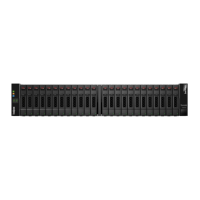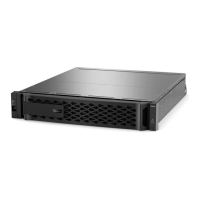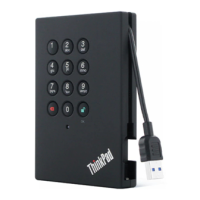Step 5. Install the SFPs from the original controller in the host ports on the new controller, and reconnect all
the cables. If you are using more than one host protocol, be sure to install the SFPs in the correct
host ports.
Step 6. If the original controller used DHCP for the IP address, locate the MAC address on the label on the
back of the replacement controller. Ask your network administrator to associate the DNS/network
and IP address for the controller you removed with the MAC address for the replacement controller.
Note: If the original controller did not use DHCP for the IP address, the new controller will adopt
the IP address of the controller you removed.
Go to Complete controller replacement.
Complete controller replacement
You complete the controller replacement by placing the controller online and confirming that the storage
array is working correctly. Then, you can collect support data and resume operations.
Step 1. As the controller boots, check the controller LEDs and the seven-segment display.
When communication with the other controller is reestablished:
• The seven-segment display shows the repeating sequence OS, OL, blank to indicate that the
controller is offline.
• The amber Attention LED remains on.
• The Host Link LEDs might be on, blinking, or off, depending on the host interface.
Attention LED (amber) Seven-segment display
Host Link LEDs
Step 2. Check the codes on the controller's seven-segment display as it comes back online. If the display
shows one of the following repeating sequences, immediately remove the controller.
• OE, L0, blank (mismatched controllers)
• OE, L6, blank (unsupported HIC)
Attention: Possible loss of data access – If the controller you just installed shows one these
codes, and the other controller is reset for any reason, the second controller could also lock down.
Step 3. When the controller is back online, confirm that its status is Optimal and check the controller shelf’s
Attention LEDs. If the status is not Optimal or if any of the Attention LEDs are on, confirm that all
cables are correctly seated and the controller canister is installed correctly. If necessary, remove
and reinstall the controller canister.
Note: If you cannot resolve the problem, contact technical support.
Step 4. If required, redistribute all volumes back to their preferred owner.
a. Select Storage ➙ Volumes.
Chapter 3. Hardware replacement procedures 111

